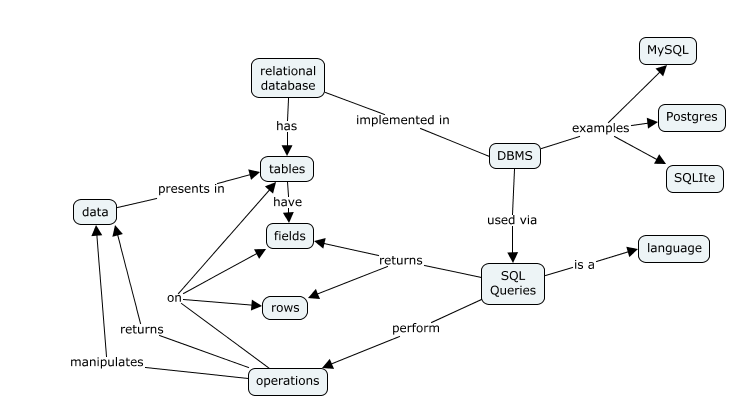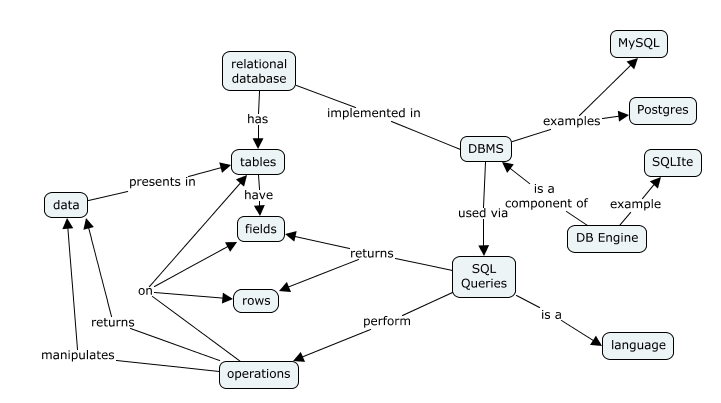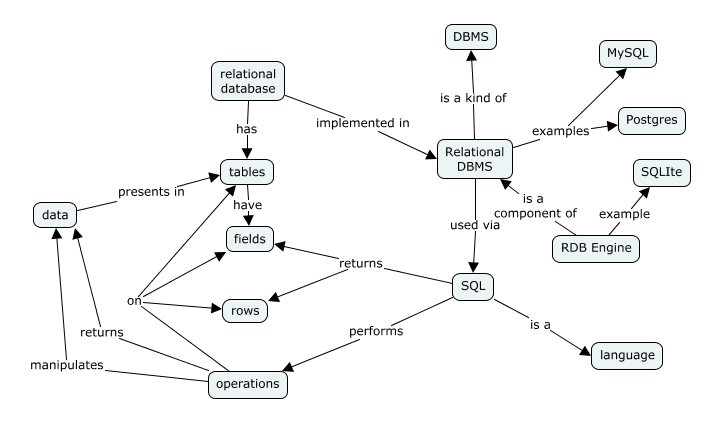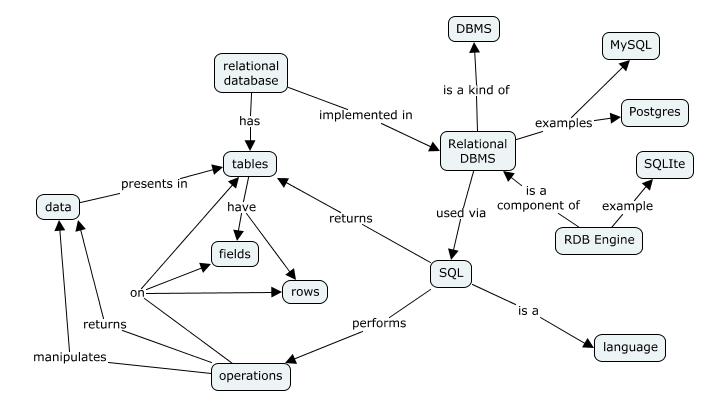
A Web RDB Example in Concept Map
by K. Yue
Example
The goal of this example is to refine a concept map (CM) for the Relational model: http://files.software-carpentry.org/training-course/2014/09/Bild-2014-09-22-kl.-18.20.jpg
This example shows a few steps in the iterative refinement to illustrate how Element of Thinking (EoT) and intellectual standards may be relevant.
We start with a simple high level CM for "database system":

Many concepts and links can be related to Critical Thinking's Element of Thought (EoT) and Intellectual Standards (IS):
https://www.criticalthinking.org/ctmodel/logic-model1.htm
Consider the node "database managers." It may have at least two meanings:
The link from "database managers" seem to indicate DBMS. Thus, we have:

The changes involve:
The DBMS examples of "MySQL", "Postgres" and "SQLite" are good concepts. Related EoT may be concept, point of view, and information. Related IS may be breadth. It also uses "exemplification" of the SEE-I method. Note the flexibility of CM. Postgres is an instance of DBMS. From this point of view, DBMS is a class and Postgres is an object. You will need to use two diagrams in UML: class diagram and object diagram. In CM, concepts can be classes or objects.
However, SQLite is not actually a DBMS but a DB engine, or SQL engine, which is a core component of DBMS that parses and executes SQL. Thus, we create a new concept 'DB Engine'.

The changes involve:
Consider the link between "DBMS" and "SQL Queries." It is mostly correct. However, SQL is a language for Relational DBMS, not for all DBMS. If desired, we can make change:

The related EoT of the changes may be:
This may also improve on the standards clarity, relevance, and precision.
Note that we also fixed the arrow direction of "implemented in".
The concept "SQL queries": may mean
Shall we have one concept or three concepts in our CM? It depends on the level of details needed.
If we keep only one concept, we may have:

The changes involve:
Here is the next iteration:

SQL does not directly return rows and fields. It returns SQL that contains both rows and fields.
This improves on concept, information and implications of EoT, and accuracy, precision, clarity and logic of IS.
There can be many more iterations.